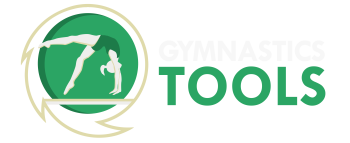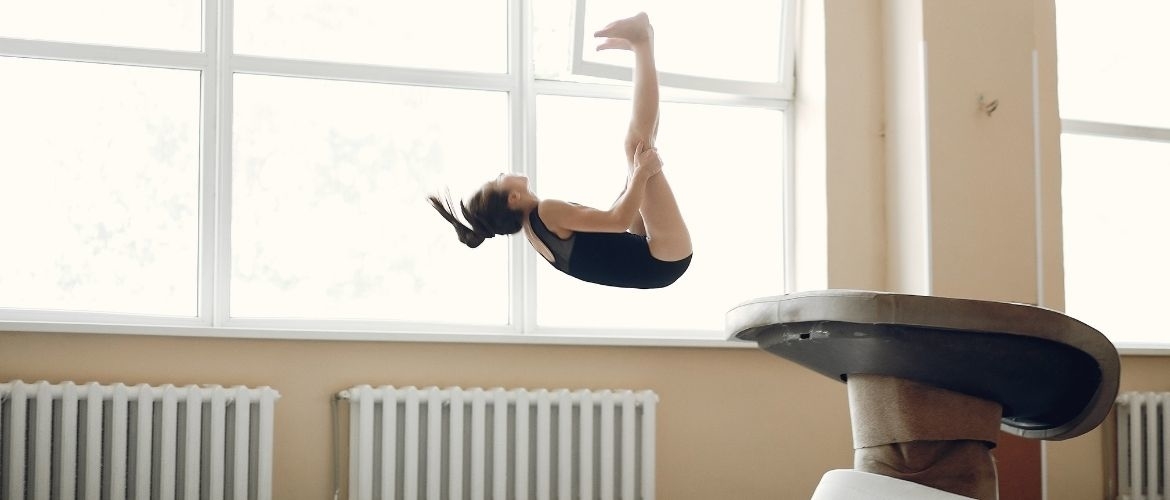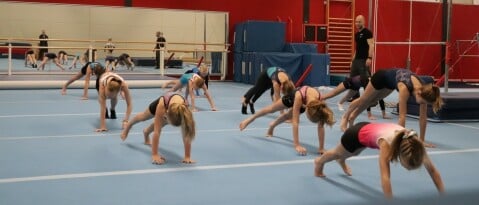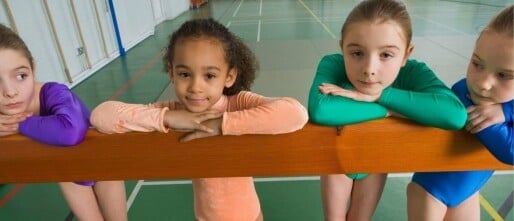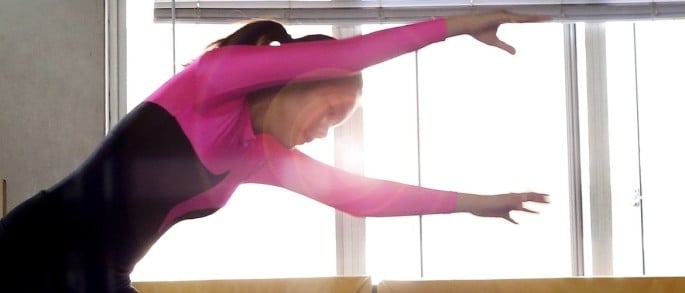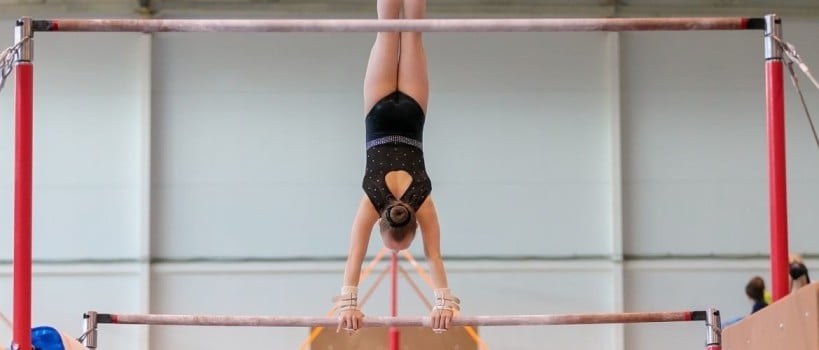In this blog I will tell you how you as a coach can teach the Tsukahara to gymnasts. Many gymnasts would like to learn the Tsukahara. It is a very cool element and usually worth a lot, so it is very important to build up for the competitions. In this blog I will tell you how you can build this up as a coach with your gymnasts, how you can approach the methods, what technical instructions are involved and how you can help and build this up step by step.
The stages of Tsukahara
The Tsukahara element consists of five phases:
- start-up phase
- jump phase
- divestment phase
- kick phase (also part of the kurbet)
- landing stage
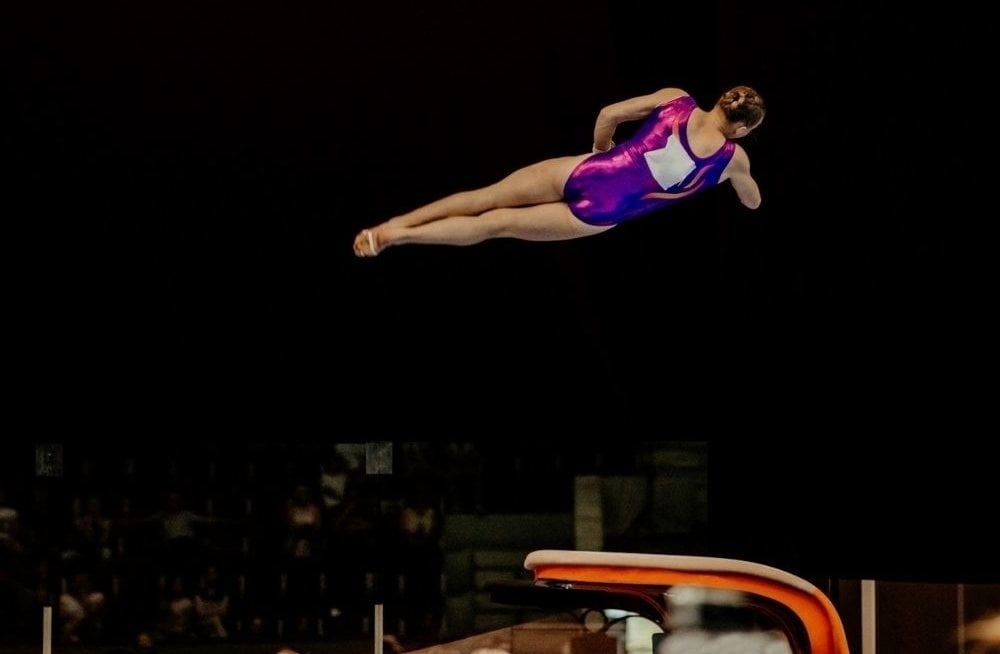
As you can see in the video below, you first have a short run-up phase, then the push-off, the jump phase, then the push-off and the kick-in phase and finally the landing phase.
Start-up phase
- Run-up technique: It is important to look at the run-up technique. Very often we as coaches focus on the apparatus itself and forget to look at the run-up technique. For the Tsukahara you usually need quite some speed, so it is often handy if the athlete has a good run-up technique. So sometimes it is good to take a step back and check if the run-up is correct.
- Speed: You want to create a lot of speed, which is also important for the subsequent jump that the gymnast makes.
Here are some sprinting exercises that will improve strength and speed in the run-up
Jump phase
- Leap: You often see many different leaps on the apparatus. Some athletes jump quite high. My preference would be to have a flat jump, so that you can push off against the apparatus more easily afterwards. So you should preferably have a flat indentation so that you can get a better braking and lifting effect.
- Kick up
- Feet together/ spread apart: The gymnast in the video has his feet slightly apart. Most athletes here have their feet quite far apart. From the jump phase, you should kick your heels up hard so that you can then easily push off with your arms.
Capping phase
- Brake-lift: You must be able to push off a device well.
- Posture in the round off: It is important to watch this carefully. In the video, you can see that the gymnast kicks up her heels and then has an open posture. This is usually logical, because then it is easier to do the kurbet, which is from hollow to convex. Of course you prefer to have your legs together and it is always good to look at the main position.
- Head position: You would like to see the head position more inward. So preferably not the head in the neck. If you have your head neutral or a little more inward, you can usually push off more easily. You can often see that the first hand is slightly bent and the second hand is pushed off in a stretched position. With many gymnasts, you see that the hand is often very far away. My opinion is that if you have your hands a little closer to the horse, it is often easier to push off and you can get more height in the Tsukahara. Often you want to get more height in the Tsukahara to be able to turn faster and then have more time for landing.
Kick-in phase
- Kurbet
- Kick-in of the legs: After the kick up you move from the hollow position to the round position. The gymnast in the video is actually crouching her legs too early. You can see that she kicks up her feet and immediately makes her legs crooked. In my opinion, I would rather see the gymnast kick up her legs straight and then crouch down with straight legs. So I would prefer that she has straight legs at this point, pushes off with her arms and kicks in her feet. First kick in the feet all the way and only then squat in the legs, so that you can turn faster afterwards. Now she stops turning a little because she retracts her knees a little too early. You can also see this in her height on the apparatus. If you have a better push off and a better kick in, you will also get more space in the Tsukahara and you will have more space to eventually be able to hook or to extend the Tsukahara and eventually even to be able to screw or possibly Kazumasu if you want to turn to the other side.
Exercises for pushing off and the kurbet:
- From a concave position to a convex position: I have done this exercise once myself. You can also do this together with other gymnasts. For example stand on the pegasus with another gymnast and one of you holds on and the other one does a handstand. You can then kick in your kurbet from that position. You can also do this with a combination of round offs. Of course, this is not the round off you would like to see, but it is a kind of imitation of the kurbet phase:
- Exercise with the trampoline: I think this is a nice exercise because you are at least forcing a big front hip. You could talk about whether you would like it to be a bit steeper. But it is a good exercise. You can also see that she pulls in her knees a little bit. I once tested this exercise on a large trampoline. If you have one, you can remove your run-up and use it to practise kicking in the round off.
These are all kinds of exercises that make gymnasts get more rotations.
Additional exercises for the Tsukahara
- Block kicking forward: An exercise in which a gymnast must kick a block forward to make the kurbet active.
- Exercise with a raise
- Exercise with a sloping surface: If you are good at kicking in, you can switch to a more sloping surface, so that after the kick you automatically get a kind of roll backwards. Then you get more of an idea of the Tsukahara. Then you can also see whether someone is bent or stretched. In this case, they keep the legs extended but they do angle their hips. I would prefer it if someone pushed off and kicked in with straight legs and hips, and then tried to angle or crouch. You can focus on this immediately in these situations But they do get the feeling of the rotation of the Tsukahara right away. Especially if you want to continue with the full Tsukahara, you want the gymnasts to have the experience of going upside down before they do a full Tsukahara.
Landing phase
You want to have a bit more space to be able to make a good landing in the end. For this gymnast, it was one of the first times she had finally made a Tsukahara. Before that, she had done it several times with help, but in this situation she did it on her own. You always want a gymnast to know just before the landing when they have to bring their arms forward to make the landing. The more space you have, the more time you have for the landing and that you can eventually stand still.
Assisting with the Tsukahara
Many coaches find it difficult to help with Tsukahara. You have to do quite a lot as a coach and it goes very fast. It also varies a lot per athlete, how they do it and if you have confidence that you can have that athlete. Because if someone refuses a Tsukahara, then you really have to know what you are doing as a coach, so that you can be sure that that person will not land on his neck.
You have to consider carefully as a coach whether to do it or not and when to do it. My advice is usually to build it up. You can use this exercise for that: Put a trampoline down and let your hands push into the trampoline. It is a bit like doing a plank. You can stand next to it and if you eventually notice that an athlete has enough space and can therefore push off and has a good kick, then you can use that to help with Tsukahara without it necessarily being a pegasus.
It can also be with a plank, for example, where you help them by the belly and back to turn into the Tsukahara. It is the same in this exercise, it can also be on this side with the trampoline.
If, for example, you have a belt available, you could build it up in this way. I struggled with this for a while before I managed. In the end, I was able to help with a belt. It was a fun thing to do and a different way of providing assistance.
Build up slowly
My advice would be to build it up slowly and especially consistency is very important to me as a coach. So you want a gymnast to have done these kinds of exercises many times. But also to be able to perform them consistently. And to have sufficient height each time. If they land on their hands and feet, that’s not such a problem, as long as they don’t fall on their heads. That’s something you really want to avoid, so you have to practice a lot.
But also as a coach you have to practise a lot and build up a lot of self-confidence. So of course you can stand here when someone makes a round-off to help. And the gymnast can experience how much you help. But also so that you can check whether you are standing correctly. So that you, as a coach, build up your own confidence. It is also often wise to start with two helpers, so that you can be sure that one of the two has the athlete, and that you can practice and get used to helping. In this way, you can build it up as a coach.
The technique of a Tsukahara
With Tsukahara you have different kinds of techniques and you have a technical view of how coaches look at it. So it may well be that as a coach you look at it differently. In this blog I will describe how I look at it as a coach and how I built up the Tsukahara training. If you want more tips, we have several downloads on our site where you can download checklists and you can also watch videos.
If you are an athlete or gymnast and you want more tips or more training programmes or exercises, you can go to our gymnastics platform. We also have a big platform for coaches with now something like 2500 videos, so we have all the methods and elements down and different exercises. The videos in this blog are some of these method videos.
Finally
I hope the above tips have helped you and that you and your athletes can finally start working on the Tsukahara. That you have enough confidence in them to get started. Of course I am also very curious what you think of this blog, so please let me know in the comments. Good luck with practicing the Tsukahara!
Please leave a comment on how you use these tips in your gymnastics classes and share your experience with other gymnasts.
Also check our workouts on our Youtube channel. Or check out all the exercises on the gymnastics platform.
